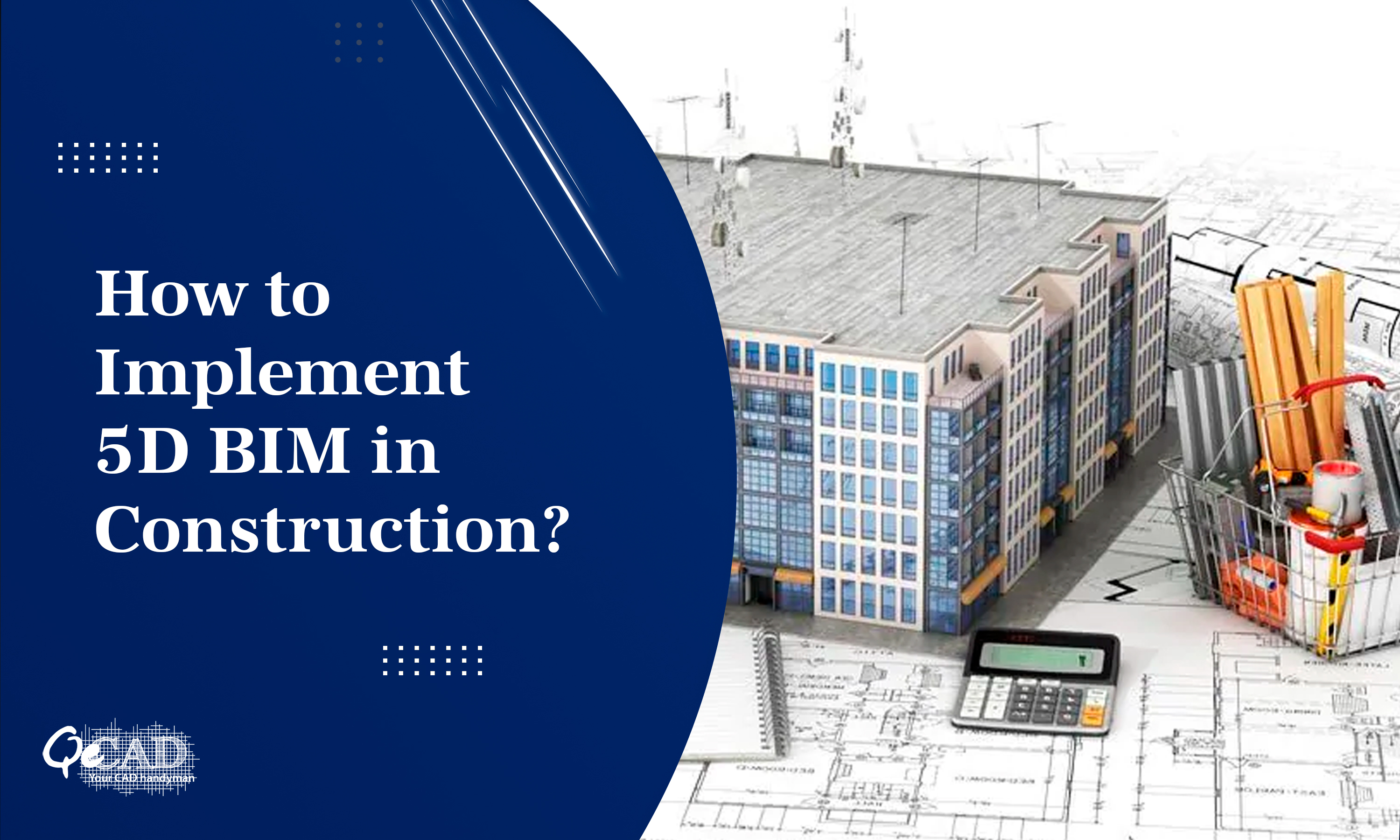
BIM Modeling Services has transformed the AEC industries by providing a detailed and intuitive approach to project planning, design, construction, and management. Traditionally, BIM did encompass just three dimensions i.e. 3D (spatial dimensions). But later with time more dimensions were added like 4D, a dimension for time and 5D, a dimension for costs.
This article illustrates the concept of 5D BIM Services, its benefits, implementation strategies, along with its transformative impact on the construction industry.
What is 5D BIM?
5D BIM extends the capabilities of 4D BIM by incorporating cost data and budgeting information into the existing BIM model. To put is simply, it combines three-dimensional design with the time aspect (scheduling) and also integrates cost estimates. This allows project stakeholders to see and control a project’s financial performance in addition to its functional and physical elements.
Benefits of 5D BIM
- Enhanced Cost Estimation and Control: One of the important advantages of 5D BIM is its ability to provide accurate and detailed cost estimates. By linking the cost data to every element of the model, the stakeholders can get the real-time cost forecasts as well as manage budgets more effectively. This dynamic approach often helps in identifying cost overruns in initial phases itself thereby implementing corrective measures promptly.
- Improved Project Visualization: With 5D BIM, the stakeholders can visualize the financial impact of design changes in the real-time. This transparency allows for more informed decision-making as the project teams can see how alterations are affected to budget and project timeline.
- Streamlined Procurement Process: Integrating cost data into the BIM model facilitates a more efficient procurement process. By having access to the precise quantities and cost information, the procurement teams can plan and purchase materials more accurately thereby reducing waste and ensuring that the project stays within budget all through.
- Risk Mitigation: 5D BIM aids in the early identification of potential financial risks throughout the project lifecycle. By analysing different scenarios and their cost implications, project managers can create contingency plans and allocate resources thoughtfully to mitigate these risks.
- Enhanced Collaboration and Communication: 5D BIM encourages improved communication and collaboration between multiple teams. All team members benefit from more efficient communication and fewer misunderstandings and inconsistencies when they have access to the same cost data and model. This cooperative method promotes a more unified and effective project atmosphere.
Implementing 5D BIM
Implementing 5D BIM requires a strategic approach and a deep understanding of both BIM technology and cost management principles. Here are some key steps to successful implementation:
- Develop a Clear Plan: It is essential to develop a clear implementation plan before integrating cost data into the BIM model. This plan should outline the goals, scope, and timeline of the 5D BIM integration as well as identify the necessary resources and stakeholders involved.
- Choose the Correct Software: Choosing the appropriate software is important for 5D BIM implementation. Various BIM software solutions, such as Autodesk Revit, Navisworks, and CostX, offer 5D BIM capabilities. These tools allow users to integrate cost data, perform cost analyses, and generate detailed reports.
- Data Integration and Management: Mapping cost data into the BIM model requires meticulous data management. Cost information must be linked accurately to the respective elements in the model. This process often involves collaborating with quantity surveyors, cost engineers, and other professionals to ensure data accuracy and consistency.
- Training and Education: Implementing 5D BIM requires a skilled workforce proficient in both BIM technology as well as cost management. Providing training and education for team members is essential to utilize the 5D BIM tools and processes. This may involve workshops, online courses, and hands-on training sessions.
- Consistent Monitoring and Improvement: Implementing 5D BIM is an ongoing process rather than a one-time effort. Continuous monitoring and improvement are essential to keep the model accurate and up-to-date. Regular audits and feedback loops can help identify areas for enhancement and refine 5D BIM processes over time. This approach represents the future of 5D BIM.
The Future of 5D BIM
The adoption of 5D BIM is expected to grow in the coming years driven by the increasing demand for cost-effective and efficient project management solutions. The integration of cost data into BIM models offers numerous benefits right from improved cost estimation and control to enhanced collaboration and risk mitigation.
Looking ahead, the future of 5D BIM holds exciting possibilities. Advancements in artificial intelligence and machine learning could further enhance the capabilities of 5D BIM, allowing for more sophisticated cost analyses and predictive modeling. Additionally, the integration of 5D BIM with other emerging technologies, such as the Internet of Things (IoT) and augmented reality (AR), could create even more powerful tools for project planning as well as management.
Conclusion:
5D BIM represents a significant leap forward in the AEC industries, providing a comprehensive yet dynamic approach to project management. By linking cost data into the BIM model, stakeholders can achieve better cost control, improved decision-making, and more efficient project execution.
